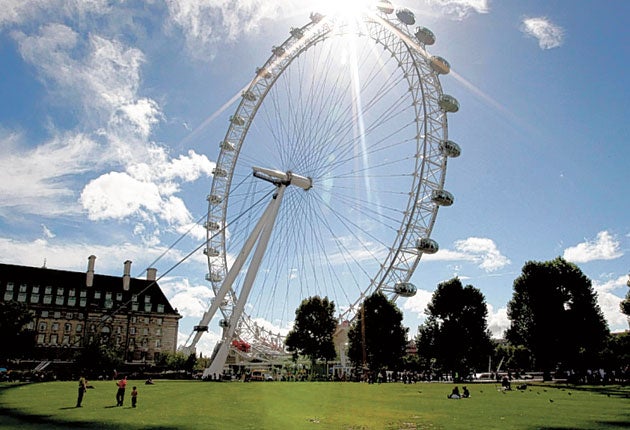Open Jaw: 'Concorde could come to London'
Where readers write back

Your support helps us to tell the story
From reproductive rights to climate change to Big Tech, The Independent is on the ground when the story is developing. Whether it's investigating the financials of Elon Musk's pro-Trump PAC or producing our latest documentary, 'The A Word', which shines a light on the American women fighting for reproductive rights, we know how important it is to parse out the facts from the messaging.
At such a critical moment in US history, we need reporters on the ground. Your donation allows us to keep sending journalists to speak to both sides of the story.
The Independent is trusted by Americans across the entire political spectrum. And unlike many other quality news outlets, we choose not to lock Americans out of our reporting and analysis with paywalls. We believe quality journalism should be available to everyone, paid for by those who can afford it.
Your support makes all the difference.Could Concorde come to the Thames?
It is totally untrue to suggest the project to bring G-BOAB to the Thames is "dead in the water" – in fact, it is very much alive.
About 12 months ago, I was approached by senior members of "Club Concorde" suggesting the South Bank would be a splendid place to bring Concorde from Heathrow airport. As an architect with more than 20 years' experience working at County Hall and on other South Bank projects, the Concorde members sought my advice.
The idea of two of the most stunning pieces of engineering of the 20th century – Concorde and the London Eye – being side by side seemed a wonderful idea and remains so. I suggested that the plane soaring above the river and accessible from the Queen's Walk could be stunning, and for the past nine months, key authorities have been extremely helpful and offered expert advice. These include Lambeth, the Port of London Authority, the Environment Agency, owners of both County Hall and the Eye, plus many more.
I am sure you understand a project as exciting as this needs to answer many technical questions – river traffic, tides, marine life, erosion, and access, to name but a few.
Good progress is being made, but several more months will be needed before a formal application to Lambeth can be made.
We hope soon to produce images which depict G-BOAB alongside the Eye in a configuration which takes into account all the technical advice we have so far received. I hope this puts the record straight and that we will, hopefully, all enjoy Concorde in the heart of London for a very long time.
Geoff Mann, Principal director, RHWL Architects
Thomas Cook Overseas Timetable to end
A great shock. The TCOT has been around for 30 years, in other words all my adult life, and it was my own inspiration for starting to travel the world overland. It opened the door on a world of exciting and adventurous train rides and ferry crossings when all the commercial world wanted to promote was planes and motorways. It will be sadly missed by overland adventurers everywhere.
On the subject of the spending cuts, I'd recommend celebrating the loss of your job by doing an RTW trip – it's just the kick up the arse one needs. On my last day at Connex after they made me redundant in late 1998 (bless 'em), I disappeared into the sunset on a late-afternoon Eurostar, bound for Marrakech. For me, this is the only rational reaction to redundancy...
Mark Smith, "The Man in Seat Sixty-One"
Plane talking
I enjoyed your 48 Hours in Toulouse. However, I must take issue with your assertion that the Caravelle entered service in 1962. As an avid aircraft spotter at London airport (as Heathrow was then called), I can recall the Caravelle entering service with Air France on the Paris-London route in July 1959, followed closely by Finnair on the Helsinki-London route. As a schoolboy, I travelled to Paris twice in 1963 by Air France Caravelle. The return fare was £11 19s 0d (£11.95).
Tony Newton
The Airspeed Envoy was a very different type of aeroplane from the Douglas DC-3 (which in its first embodiment as the Douglas Sleeper Transport had 14 seats, with later 30-plus-seat post-war variants). The Envoy appeared in 1934 and was a six- to eight-seat medium-range feeder liner. One of its designers was Nevil Shute Norway, the author. During the Second World War, its development, the Airspeed Oxford, was the RAF's main advanced trainer. Post-war conversions of the Oxford were the Airspeed Consul.
Mike Ingham
Join our commenting forum
Join thought-provoking conversations, follow other Independent readers and see their replies
Comments